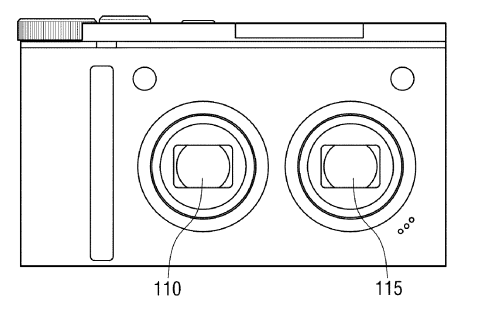 A patent application (first spotted by Photography Bay) filed by Samsung has made the rounds today, and for good reason. The application shows that the manufacturer may be pursuing a camera that will conquer depth-of-field issues that accompany point-and-shoot digital cameras. Pocket cams generally put everything in the frame in focus, giving photographers a lack of control and creativity in their shots. There’s little-to-no ability to choose what’s in focus and what’s not.
A patent application (first spotted by Photography Bay) filed by Samsung has made the rounds today, and for good reason. The application shows that the manufacturer may be pursuing a camera that will conquer depth-of-field issues that accompany point-and-shoot digital cameras. Pocket cams generally put everything in the frame in focus, giving photographers a lack of control and creativity in their shots. There’s little-to-no ability to choose what’s in focus and what’s not.
According to the document, Samsung’s solution is to create a digital camera that actually has two cameras inside of it. Both cameras would take the image: One would use a lower resolution while the other deferred to a higher resolution. The camera’s processor would mold the images into one photo and would produce a picture with the desired subject in focus and the background blurred.
It’s very slightly reminiscent of the technology from Lytro that took the digital photo world by storm last month. Lytro introduced us to the idea of a sensor that could process more information about the light entering a device, and with this data the photographer could alter the focus of the shot after the fact.
While a prototype has yet to be released to the public and we have little more than an idea to go off, we do know that the future Lytro camera will be the average size of a point-and-shoot. We also know that–at least for the time being–Lytro has no desires to sell its unique technology to other camera companies.
But given the difficulty that comes with breaking into the consumer camera industry, we wonder if Lytro could be swayed. If this Samsung patent sees the light of day and makes it all the way to store shelves, the up-and-coming company might have a more difficult time going it alone. The technologies are different of course: Lytro is producing a plenoptic camera; Samsung’s idea focuses on a stereoscopic camera. Lytro’s refocuses pictures after the shot; Samsung’s potential camera would create an image with a blurred background internally. But the effects are somewhat similar, and the point-and-shoot crowd is largely dominated by entry-level consumers who may see the features that way and err toward a big name manufacturer like Samsung in favor of Lytro.
Regardless of whether or not these two companies introduce devices that end up competing with each other, we’re excited to see this type of technology making its way to pocket cams. Hopefully this is one patent that makes it past the drawing board.
Editors' Recommendations
- DJI Pocket 2 handheld 4K camera with gimbal is 20% off right now
- Check out the tech behind the Samsung Galaxy S22 cameras
- Can Google’s Pixel 6 Pro camera beat the Samsung Galaxy S21 Ultra? I found out
- The best point-and-shoot cameras
- The best digital cameras


